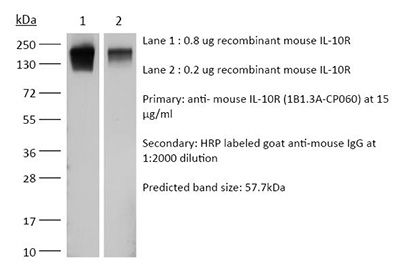Catalog #CP060
RecombiMAb anti-mouse IL-10R (CD210)
Clone
1B1.3A-CP060
Reactivities
Mouse
Isotype
Mouse IgG2a, kappa
(switched from Rat IgG1, kappa)
(switched from Rat IgG1, kappa)
You may also be interested in:

